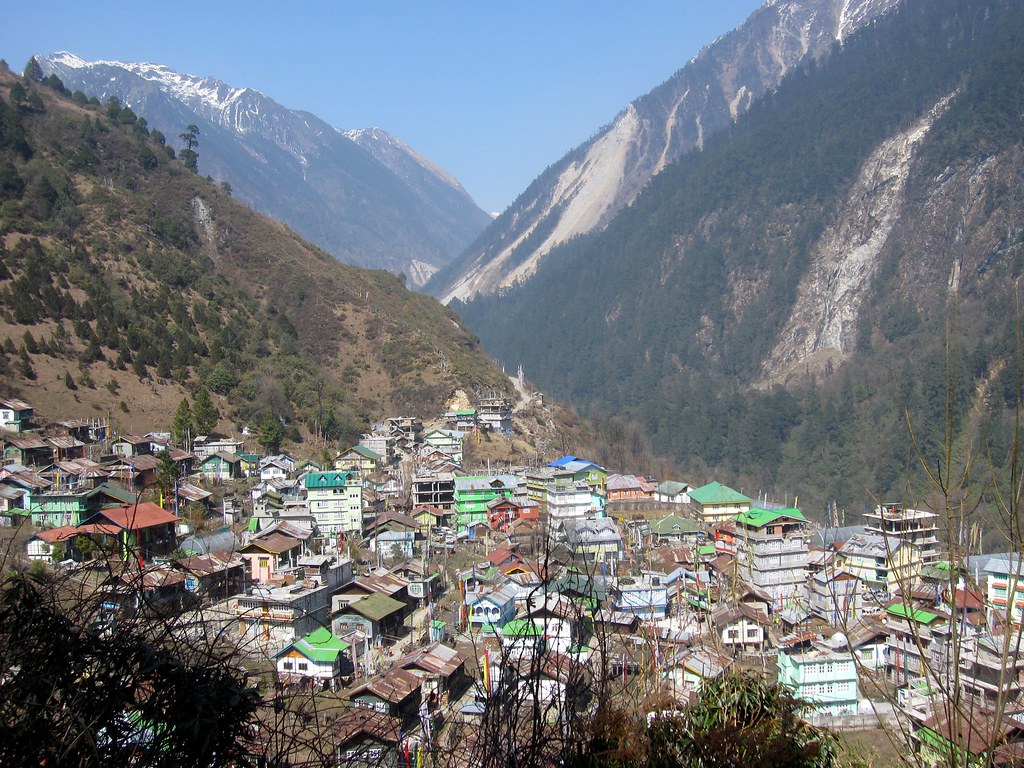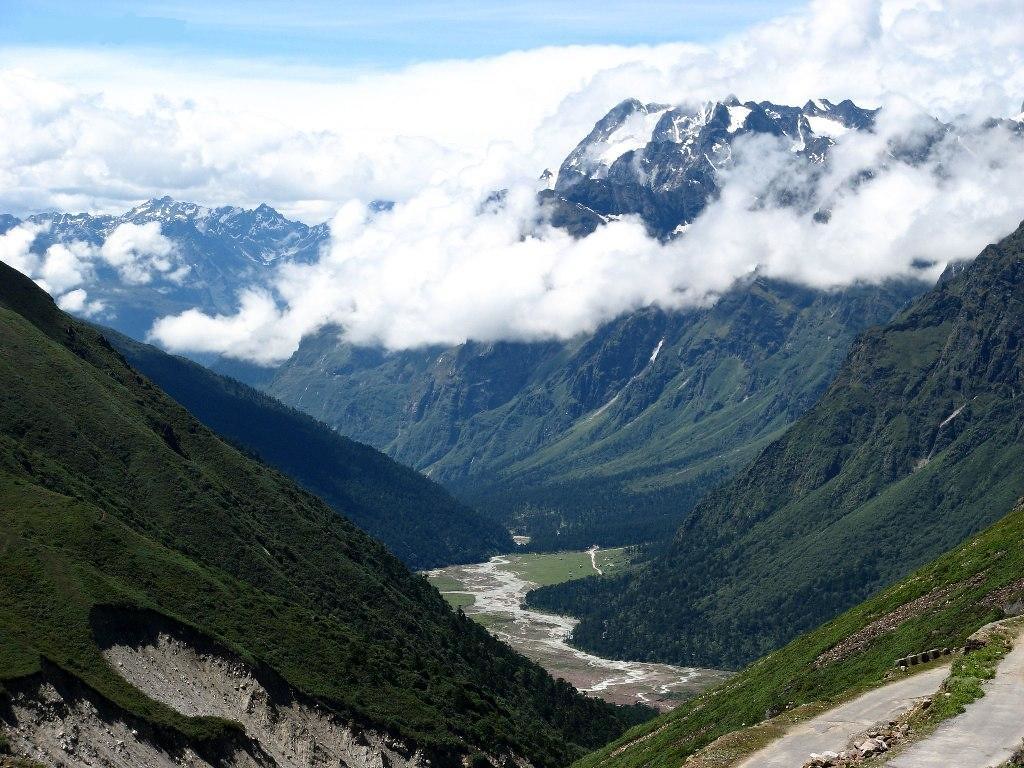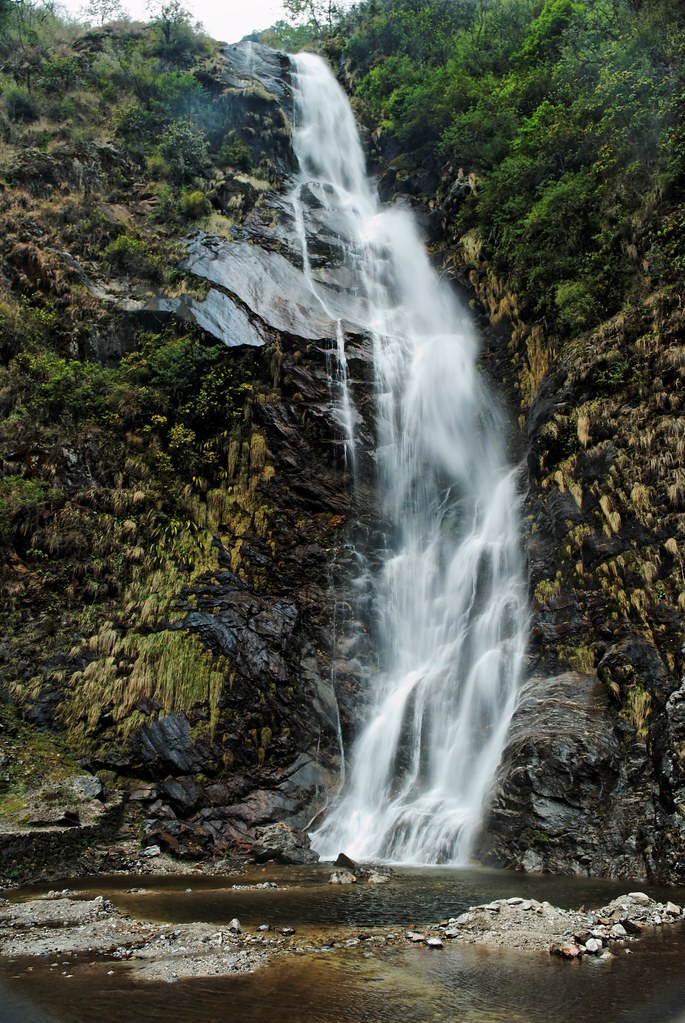Travelling to Lachen and Lachung will allow you to experience a valley of stark landscapes with snowy peaks touching the sky, gurgling rivers dotting the highlands and an ancient civilization that has survived for thousands of years preserving its cultural heritage against the onslaughts of modernity, North Sikkim seems nothing less than a dream.

The Himalayas (Photo by jayk7)
The remoteness of the place offers a rare and singular experience. Our tour operator had stressed that North Sikkim is the Switzerland of India. We started for Lachen after lunch from Gangtok, Sikkim’s capital, ascending to a height of 10,000 ft from 4,000 ft. It had gone dark when we reached Lachen. The chill of the place, at times, became uncomfortable but the feeling of being at 10,000 ft and covering the way to 17,000ft to Lake Gurudongmar was enough to give us warmth to bear the chill.
Lachen
Nestled in the lap of the Himalayas, Lachen town stands on a grassy and bush flat from the periphery of which rise the pine-clad mountains with their snowy peaks and black cliffs. The village comprises only about 400 houses. Heavily layered and packed, we set off at 4 O’clock the next morning.

Lachen (by Quinn Comendant)
Gurudongmar Lake
The Gurudongmar Lake, one of the highest lakes in the world, paints a calming picture, the Yumthang Valley turns scarlet with rhododendron blooms and the tiny villages and monasteries add color and character to the natural beauty and breathtaking sights of north Sikkim. The Fog lifting from Lachung village; yaks getting herded back for the day are enough to attract tourists in multitudes.

Gurudongmar Lake (by Saran Chamling)
Gurudongmar is about 70 km from Lachen but it takes over five hours on badly-maintained roads. So execrable were some stretches that we rocked and rocked and flew off our seats. Our only stop in the journey was at around 7 am at Thangu — a small hamlet that serves as a basic food stop for the journey. Fully ‘momoed’ and ‘Maggied,’ we again started for our course.
In about an hour, we were to cross the tree-line. From then on, nothing but snow would be visible all over. The weather kept getting chiller and the air thinner as we ascended to great heights. Hardly three kilometres above Thangu, all signs of vegetation disappeared. From vibrant lush green, the scenery transformed into a snowy desert in a flash of seconds.
The ascent to that height is gradual but the vehicle moved slowly as if it also struggled for air. An hour later,we came to a vast stretch of flat, brown tableland surrounded by glacial snow peaks on either side. It was all white interrupted by the sudden flash of color of the prayer flags as they fluttered and danced in the breeze. We were at the the foot of Lake Gurudongmar.
Legend of Lake Gurudongmer Lake
Legend has it that the lake used to remain frozen for the whole year. So when Guru Nanak/Guru Rimpoche came here, the locals approached him appealing for help. From then on, the part where the Guru bathed does not freeze while the rest ices over. Water from this part is considered amrit . The lake was all frozen but for a stream of water emanating from one end. The Sarva Dharma Sthala temple near Lake Gurudongmar.

Gurudongmar Lake (Photo by The Virtuous One)
Best time to visit Lake Gurudongmar
Post monsoon months are the best time to visit Gurudogmar Lake, because of the pleasant weather there. It was all white interrupted by the sudden flash of colour of the prayer flags as they fluttered and danced in the breeze. We were at the the foot of Lake Gurudongmar.
Ethereal Beauty of Lake Chalamou
This small stream joins the stream from Lake Chalamou (19,000 ft) to build up the Lachen Chu that combines with the Lachung Chu to form the Teesta river. The whole experience can be summarised in a smart quip from a friend: “The view from there is breathtaking, provided you have any breath left!” We hurried ourselves to have some simple but wholesome food at Lachen and then leave for Lachung, some 40 km from here. The famous Seven Sisters Falls is located 32 km from Gangtok.
Lachung

Lachung Valley (Photo by Indrajit Chakraborty)
Places to stay in Lachung
Accommodation is a few notches better in Lachung than in Lachen. Our stay was arranged in the simple but nice Hotel Fortuna by the Tibet Tours and Travels. In less than two hours, we reached Lachung.
How to reach Lachung
By air, Bagdogra is the nearest airport. Chopper services are available to connect it to Gangtok INR 2200 for one way. You can visit Lachen/Lachung by helicopter for INR 7200 one way for four people; flying time is 60 minutes.
By road, it takes six hours to reach Lachen and another four to reach Lake Gurudongmar. Lachung is a two hours away from Lachen. Yumthang is a two-hour drive from Lachung.
Administrative system of Lachen and Lachung
Both Lachung and Lachen have a very different administrative system. Every year, in February, a festival is arranged in these villages to elect their Pipon. This system, unique to these villages, has been in existence from even before 1976, when Sikkim became a part of India. A Pipon is entrusted with all the administrative, executive and judicial responsibilities of the village. Half of the fund for this is collected from the villagers(non-lepchas, namely Nepalis and Bhutias) and the other half comes from the District Collector of Mangan (of which these villages are a part). In simple words, as the hotel manager explained, the Pipon is like an elected lord for a year.
Yumthang Valley
We had a long chat with our manager about the Yumthang Valley or the valley of flowers that Lachung is famous for. ‘Sir, you will get to see rhododendrons of shades you can only imagine, he said. Forty out of 50 rhododendron species, he told us, are indigenous to Sikkim and 23 out of them are found only in this part.It was seven in the morning and the sun had started shining brightly over the snow-peaked hills, the scarlet of rhododendrons was disguised by the night fog and monastery bells chimed at a distance: you can’t dream of a better morning! You feel even more blessed when offered a glass of fresh yak milk.We started off in search of the scent that brought us here.
Travelling to Yumthang Valley
The calmness of the hills carried a divine aura. The flags swayed furiously as the winds picked up pace. The Yumthang Valley is 25 km from Lachung village — a journey of an hour with rhododendrons smearing their colour in the air and a carpet of pirumala (a small herb with violet flowers) to greet you. The sight evokes a feeling of romance.

Yumthang Valley (by Joginder Pathak)
Snowed in at Yumthang Valley!
We discovered on our way that it had snowed the previous night and Yumthang wouldn’t be doable that day.We decided to still go ahead. Seeing a lot of Border Roads Organisation vehicles, we understood that work was on to clear the snow. It was snowy everywhere and we were soon joined by others who’d ventured out to take in the sight of the rhododendrons. Yumthang was left undone and our driver consoled us with “In May, it’s even more beautiful.” We could just smile.
Lachung Monastery
On our way back through the pastoral and pleasant settings, we halted at the Lachung Monastery. We traversed through the Lachung village trying to capture the colors of life there. Life in these places is hard without even the basic amenities of medical care. A lone army hospital of two rooms served all the medical needs of the villagers

Lachung Monastery (Photo by Nichalp)
The Drive Back to Gangtok
Through the same settings of lofty hills where ferns hung like maiden’s hair, we made our way back to Gangtok crossing some gigantic waterfalls. Luckily, it had started raining. You can imagine the gush of the falls after a good rain. Bhim Falls, a little away from Lachung, which appeared a thin line three days ago, had become a powerful water gun. The water churned vehemently, falling down with splendid, imperious force. Such falls were quite frequent on our way.

Bhim Falls (by gkrishna63)
A little before Chungthang we crossed the Naga Falls that appeared to be cannoning out of the mountainside.The scenic route is an absolute delight for eyes as one can leisurely view and imbibe the amalgamation of rugged mountainsides and natural beauty with long winding roads seeming like strands of thread being woven together.
In less than five hours, we were back in Gangtok. But these three days gave me experiences that I believe can neither be penned down as gloriously nor captured with a lens as dramatically.They can just be experienced and cherished.
Lots of tour operators in Gangtok offer lucrative packages. To book, call
Tibet Tours & Travels’ (Kolkata )
Telephone: +91-33-24993226/28 /+91-92335-24070
tibettoursikkim.com
Fortuna Lachung Resort
Telephone: +91-92334-00330/ +91-92334-00361/ +91-92334-00325.
Email: [email protected]
By Sonia Wigh
About the Author
Sonia Wigh loves to travel and is an avid reader. She is partial to historical romance novels and historical travel accounts.



